Finding an amplifier that works for you is something that every bass player has to do at some point. But when there are so many options out there, it can be hard to know where to look and what to look for.
This guide will give you an overview of how bass amps work and some key things to consider before purchasing one. We will also recommend a few beginner amps for you.
How do they work?
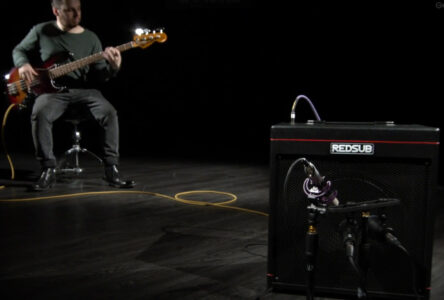 First of all, why do bass players need different amplifiers to those of guitarists? The main reason is the amount of power required to amplify the signal.
First of all, why do bass players need different amplifiers to those of guitarists? The main reason is the amount of power required to amplify the signal.
Bass guitars, or other bass instruments such as the double bass, play at lower frequencies than the guitar. This requires more power in order to amplify to the same volume.
Larger speakers are also used as more air needs to move with lower frequencies. Because of this, it’s not recommended to use your bass in a normal guitar amp as the low frequencies can damage or destroy it.
Before you learn about the different types of amplifiers, it’s useful to know a little bit about what goes on inside one…
There are two main sections in your general amplifier before the sound goes to the speaker: the preamp and the power amp.
We need a preamp because the signal that comes from your bass is very weak and prone to picking up noise and other distortion. A preamp strengthens the signal, enabling it to be amplified at a high enough volume to power the speakers. It’s also at this stage that you can shape your sound via the tone, mid, and bass knobs on your amp.
The power amp simply makes the signal larger. Sometimes, there’s an effects-send between the preamp and power amp, which allows you to put some effects on the pre-amped signal. It also lets you take out the preamp signal and put it into another input such as an audio interface.
The strengthened signal from the power amp drives the speaker in your amp. A speaker is often just a cardboard or paper membrane that pushes air when a signal is applied. After all, sound is just vibrations.
As mentioned earlier, the speakers on a bass guitar amp are larger than a guitar amplifier’s speakers. The general rule of thumb is that the larger the diameter of the speaker, the more bassy the sound is. You can use this to inform your choice of amplifier depending on what sort of tone you’re after.
So, what kind of amps can I get?
You may have seen the words “combo”, “cab”, and “head” if you’ve been looking at amplifiers.
A head is the preamp and power amp sections, as explained earlier. The cab, or cabinet, is simply the speaker for your amplifier. You can buy these units separately, mixing and matching for unique control over your sound and choosing the appropriate models for your venue. If you’re buying separate heads and cabs, it’s important to ensure that the two units match. Otherwise, you’ll encounter issues and, potentially, damage your equipment.
A combo amp combines both sections into one unit. There are advantages and disadvantages to both types of amplifiers.
Combo amps are the most popular, especially in homes and practice spaces. This is because they’re cheaper than purchasing a head and cab separately, and they’re easier to move around.
Valve, solid-state, or hybrid?
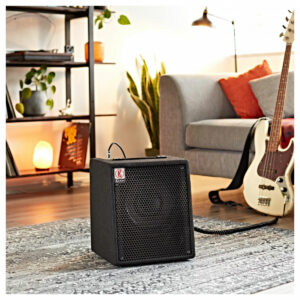 There are three other main terms you may hear when looking at amplifiers: valve, solid-state, and hybrid. These are basically how the circuitry in the head (preamp and power amp) works.
There are three other main terms you may hear when looking at amplifiers: valve, solid-state, and hybrid. These are basically how the circuitry in the head (preamp and power amp) works.
Valve amps are the original construction. Essentially, a valve is a glass tube with a vacuum inside. It carries an electrical current which then amplifies the signal. The sound of a valve amp is considered desirable by some musicians, especially those seeking vintage sounds.
The downsides of valve amps are that they are often more expensive, fragile, and require regular replacements of the valves. That being said, if the sound is important to you then don’t let this put you off!
Solid-state amps differ from valves in that they use more modern transistors to amplify instrument signals. The sound from solid-state amps is very consistent, which is why they’re the most popular kind of amp. They’re also substantially less fragile and don’t require much maintenance at all. This sort of amplifier is recommended for most musicians unless you specifically want the valve sound.
Hybrid amps use both solid-state and valve technology. Usually, the preamp will be one type of circuit and the power amp will be the other. This achieves a compromise as you get the genuine tone of a tube amp but also have the consistency associated with solid-state amps. You’ll still need to keep the tubes in good condition and replace them periodically, however.
Finding a good amplifier
The great thing about amplifiers is that, as their basic function is very simple, you can’t really go wrong with whichever amp you choose. This means you can focus on the features, power, and flexibility the amp offers and worry less about it producing a decent sound.
Most amplifiers have some form of EQ in them. This usually ranges from two knobs (or bands) for bass and mid adjustments to four bands (treble, hi-mid, low-mid, and bass). How much control you want really depends on the tone you’re after and how you create it.
Returns and sends are more useful features to have in your amplifier. These enable you to place pedal effects in your signal chain after the initial preamp stage. Depending on your pedals, this may be better for the effects as they may work better with a louder signal.
Returns are also useful if you want to plug an instrument into the power amp and bypass the preamp – particularly good for instruments that have preamps already built in.
On the flip side, you can use the send to take the pre-amped signal out of your amplifier and into something like a USB audio interface. This is good if you want to record the raw sound of your amplifier without recording the overall output through the cab with a microphone.
You’ll also be looking for the power of the amp. This is measured in Watts (W) and basically tells you what sort of volume levels you can expect. Generally, lower wattage amps are considered more for personal practice and home use, you don’t need to be filling a whole venue with sound so don’t need the power. You also don’t want to annoy your neighbours too much!
A high-powered amp is more suited to venues and larger spaces. The exact amount of power you need will depend on the size of the venue – you don’t want 2000W of power for small pub gigs!
Our recommendations
RedSub BA-30 30W
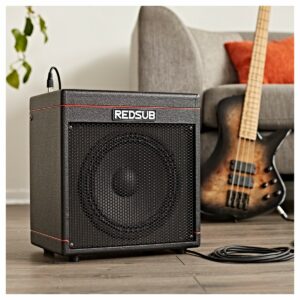 The RedSub starts our list. This is a great beginner’s amp and comes in at a reasonable price. But even though the price is low, the amplifier is still fully featured and exhibits much of the functionality we have discussed in this article, such as a three-band EQ for tone shaping and a return and send for adding effects to your sound.
The RedSub starts our list. This is a great beginner’s amp and comes in at a reasonable price. But even though the price is low, the amplifier is still fully featured and exhibits much of the functionality we have discussed in this article, such as a three-band EQ for tone shaping and a return and send for adding effects to your sound.
This amp even features High and Low inputs for active or passive bass guitars, respectively. With 30W of power, this amp is ideal for at-home practice.
Shop now | RedSub BA-30 30W Bass Amplifier
Orange Crush Bass 25 Combo
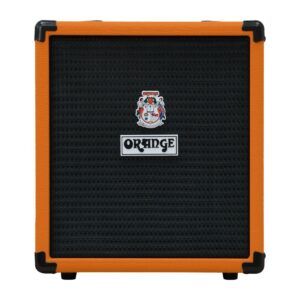 Orange are a classic amplifier brand and, if you’ve seen any live music, the chances are you’ll have seen an Orange amp used on stage. The Orange Crush is a great option if you want that time-honoured sound in the classic orange colour, all at an affordable price.
Orange are a classic amplifier brand and, if you’ve seen any live music, the chances are you’ll have seen an Orange amp used on stage. The Orange Crush is a great option if you want that time-honoured sound in the classic orange colour, all at an affordable price.
Again, this amp comes with a three-band EQ. What makes this EQ slightly different though is the extra mid-frequency knob. This allows you more precise control over the tone and which frequencies are either boosted or cut. The amp has 25W of power, also making it a great choice for practising.
Shop now | Orange Crush Bass 25 Combo
Shop now | Orange Crush Bass 25 Combo, Black
Fender Rumble 100
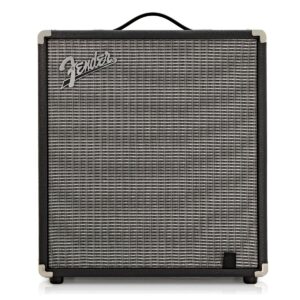
Fender is perhaps one of the most recognised guitar and bass brands in the world. They’re, of course, most well-known for their guitars but they also have a stunning reputation for making amplifiers.
The Fender Rumble is a great example of their engineering. Alongside the four-band EQ, this amp has an overdrive with three different modes built in, giving you the ability to add grit and aggression to your sound.
Shop now | Fender Rumble 100 1×12 Bass Combo
Boss Katana-110
Boss are known for their heavy-duty and high-quality effects pedals. The Katana range of guitar amps, released in 2016, quickly became a popular amp for guitarists. Boss then included bassists in the Katana range by releasing some Katana bass amps.
The Boss Katana-110 is one of the two amplifiers on offer. With a 60W output, this is a great practice amp and can also hold its own on stage.
Find out more about the Katana here.
Shop now | Boss Katana-110 Bass Amplifier Combo
Ampeg Rocket Bass 112
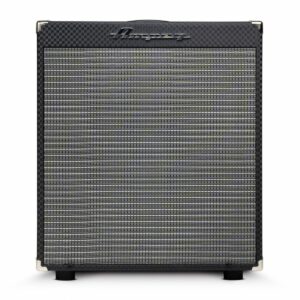
Ampeg have a long history of making bass amplifiers as well as bass guitars. The Rocket Bass 112 is a portable yet powerful amp that has a massive 12” speaker.
It uses Ampeg’s Super Grit Technology (SGT) overdrive circuit. This adds great crunch to your sound as well as providing excellent sound-sculpting features.
The amp is designed for gigging and is made to be lightweight and easily carried. The XLR outputs on the amp also enable you to hook your amp up to a venue’s sound system.
Shop now | Ampeg Rocket Bass 112
Find out more
Hopefully this guide has enlightened you on the world of bass amps. They may seem like tricky business, but they’re pretty straightforward when you know what to look for!
Why not check out our full range and find the perfect one for you?

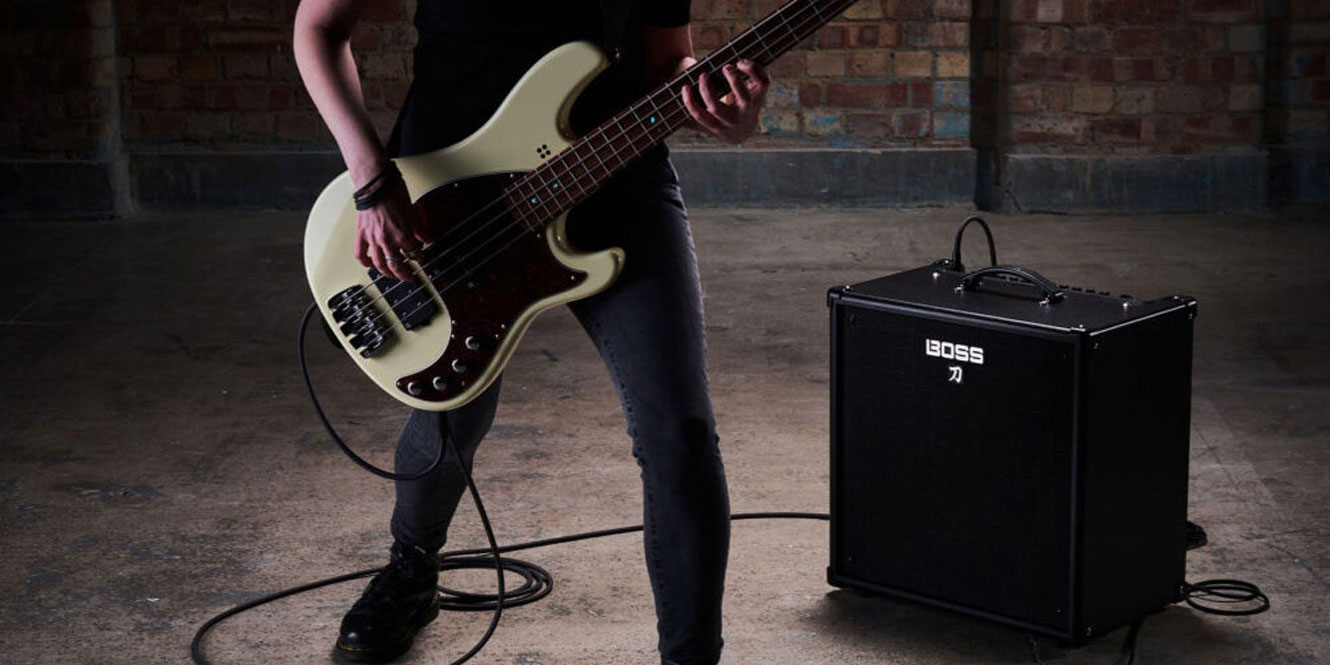











0 Comments